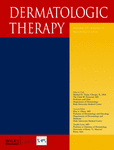Pitted keratolysis, erythromycin, and hyperhidrosis
Abstract
Pitted keratolysis (PK) is a plantar skin disorder mainly caused by coryneform bacteria. A common treatment consists of the topical use of erythromycin. Hyperhidrosis is considered a predisposing factor for bacterial proliferation and, consequently, for the onset of PK. The aim of this study was to evaluate the relationship between PK erythromycin and hyperhidrosis. All patients with PK seen in Sant'Andrea Hospital, between January 2009 and December 2011, were collected. PK was clinically and microscopically diagnosed. All patients underwent only topical treatment with erythromycin 3% gel twice daily. At the beginning of the study and after 5 and 10 days of treatment, a clinical evaluation and a gravimetric measurement of plantar sweating were assessed. A total of 97 patients were diagnosed as PK and were included in the study. Gravimetric measurements showed that in 94 of 97 examined patients (96.90%) at the time of the diagnosis, there was a bilateral excessive sweating occurring specifically in the areas affected by PK. After 10 days of antibiotic therapy, hyperhidrosis regressed together with the clinical manifestations. According to these data, we hypothesize that hyperhidrosis is due to an eccrine sweat gland hyperfunction, probably secondary to bacterial infection.




